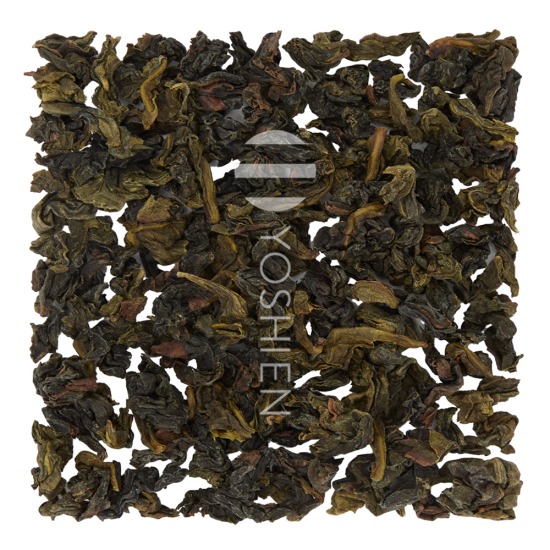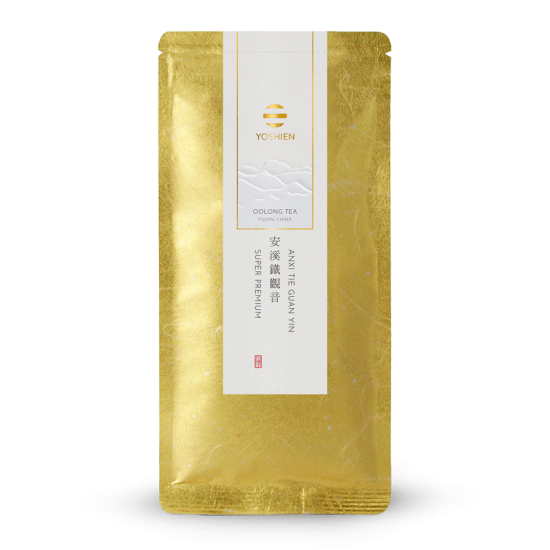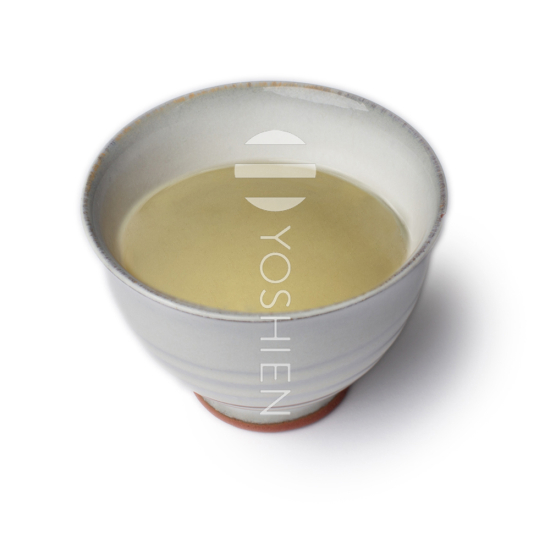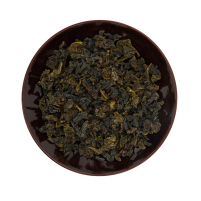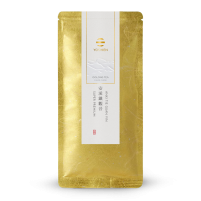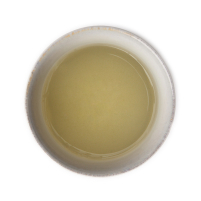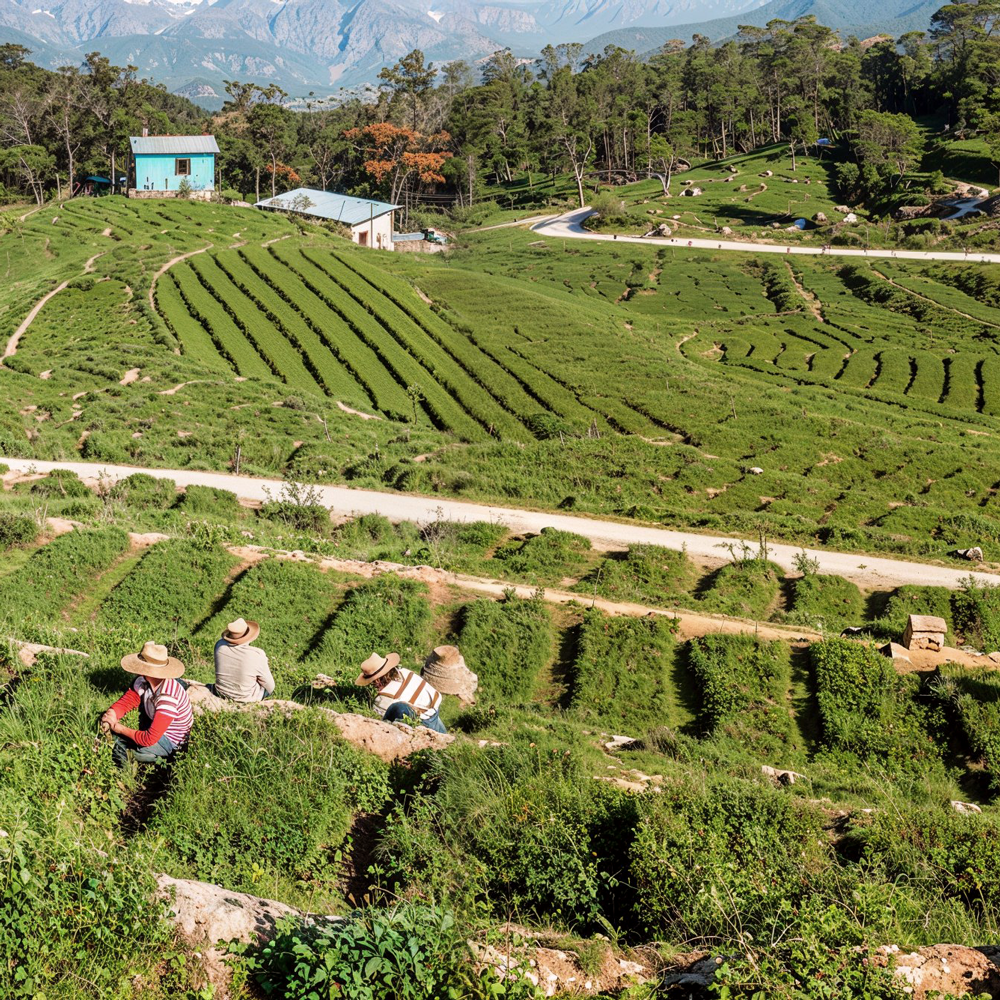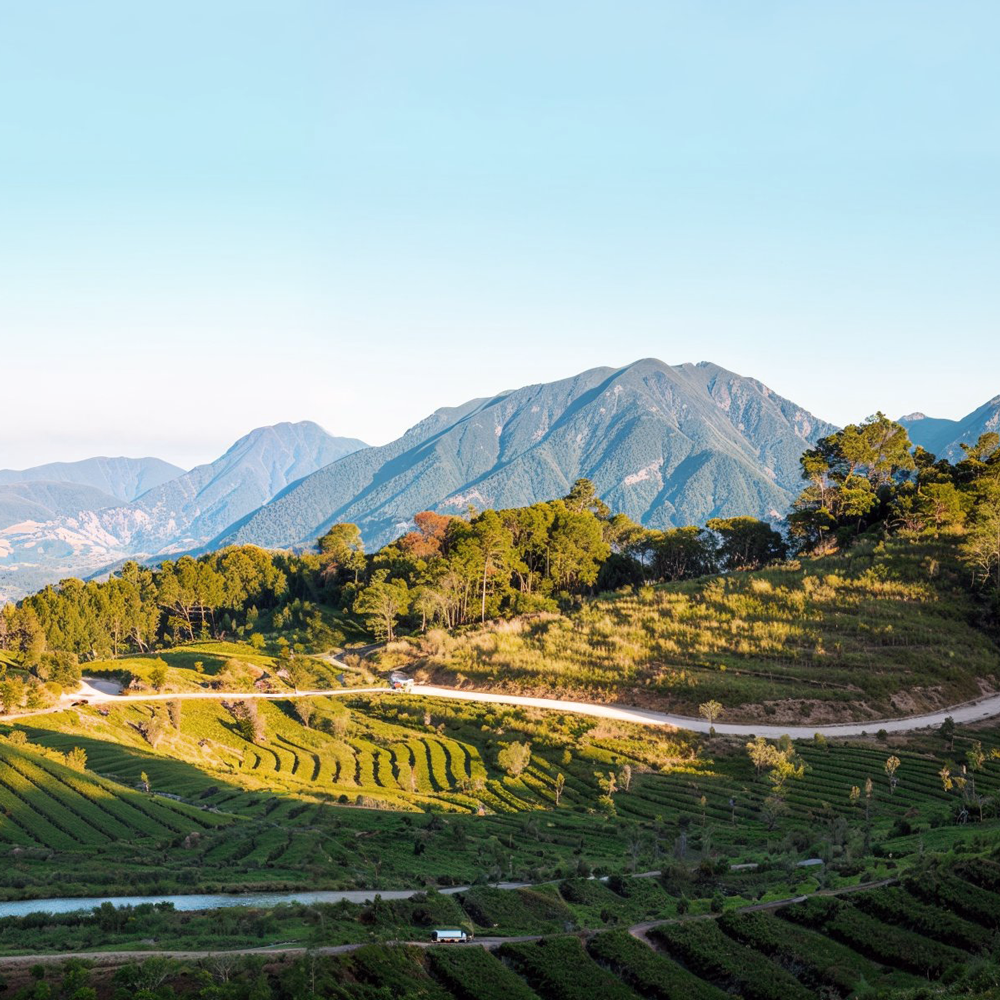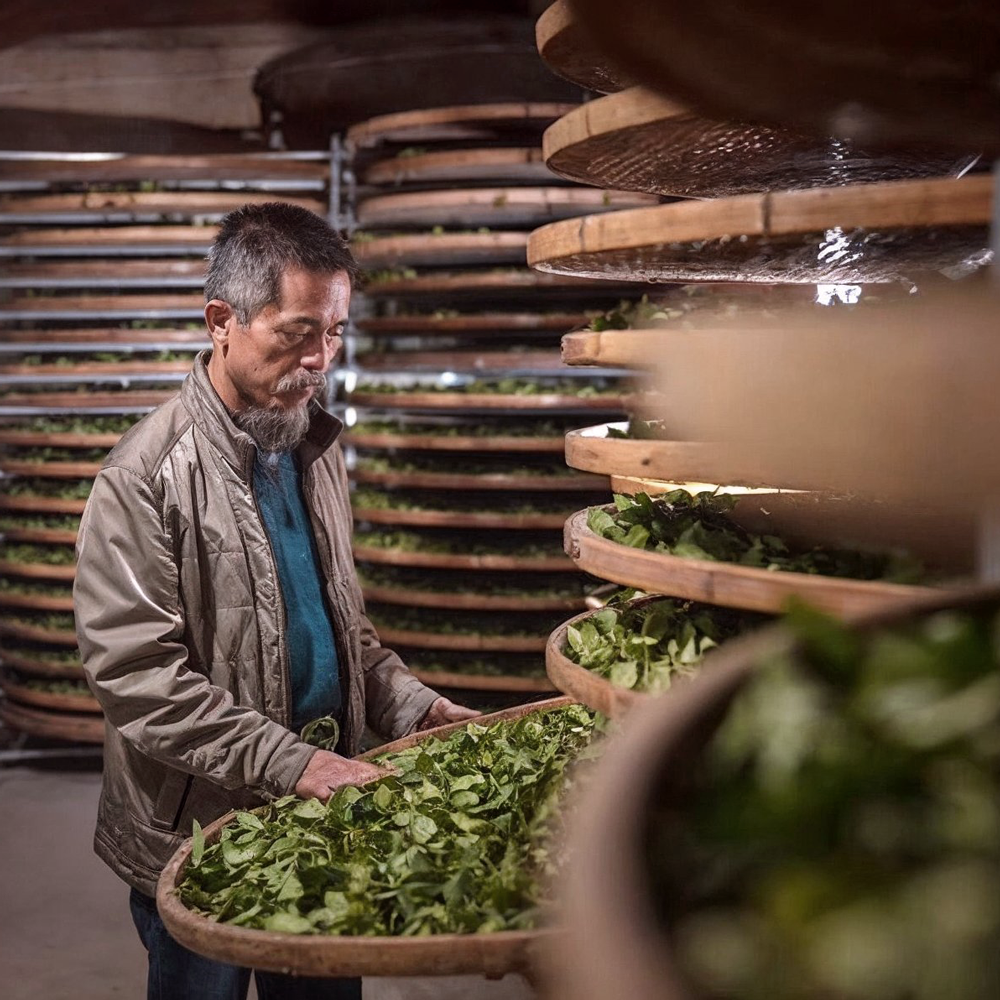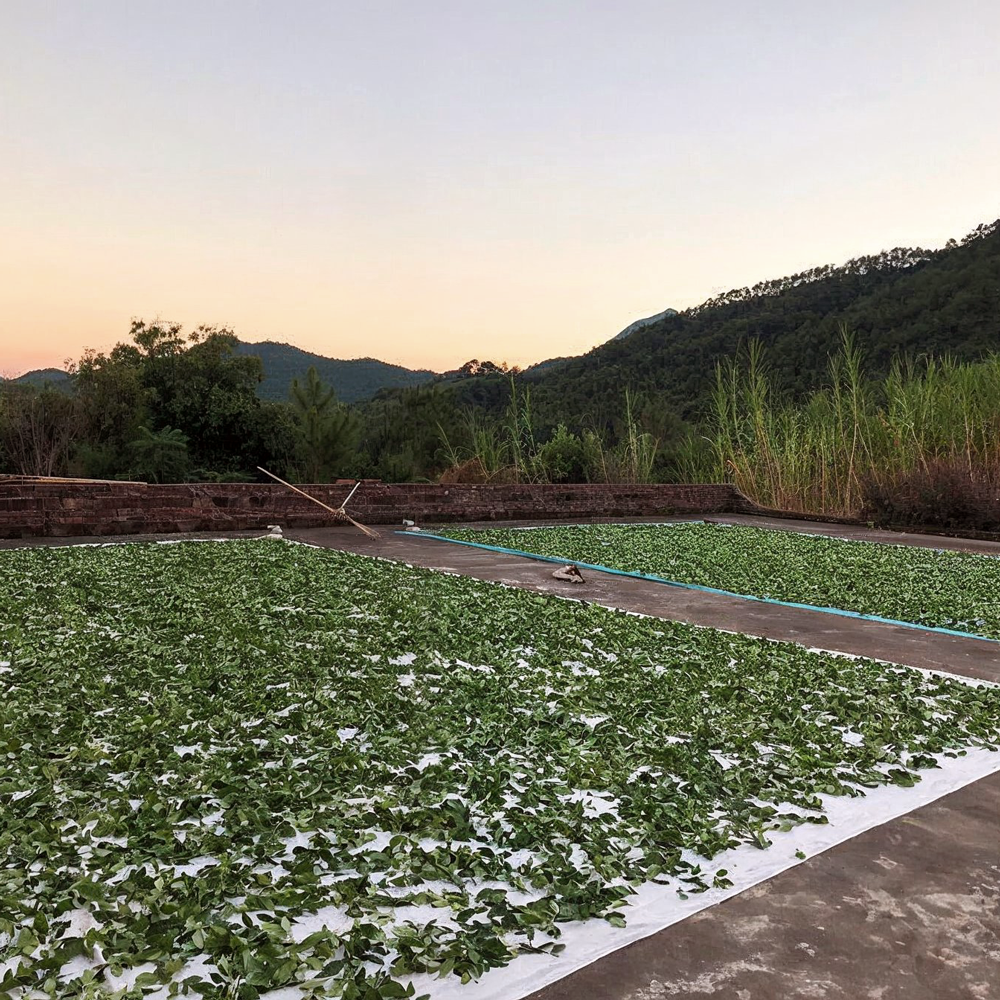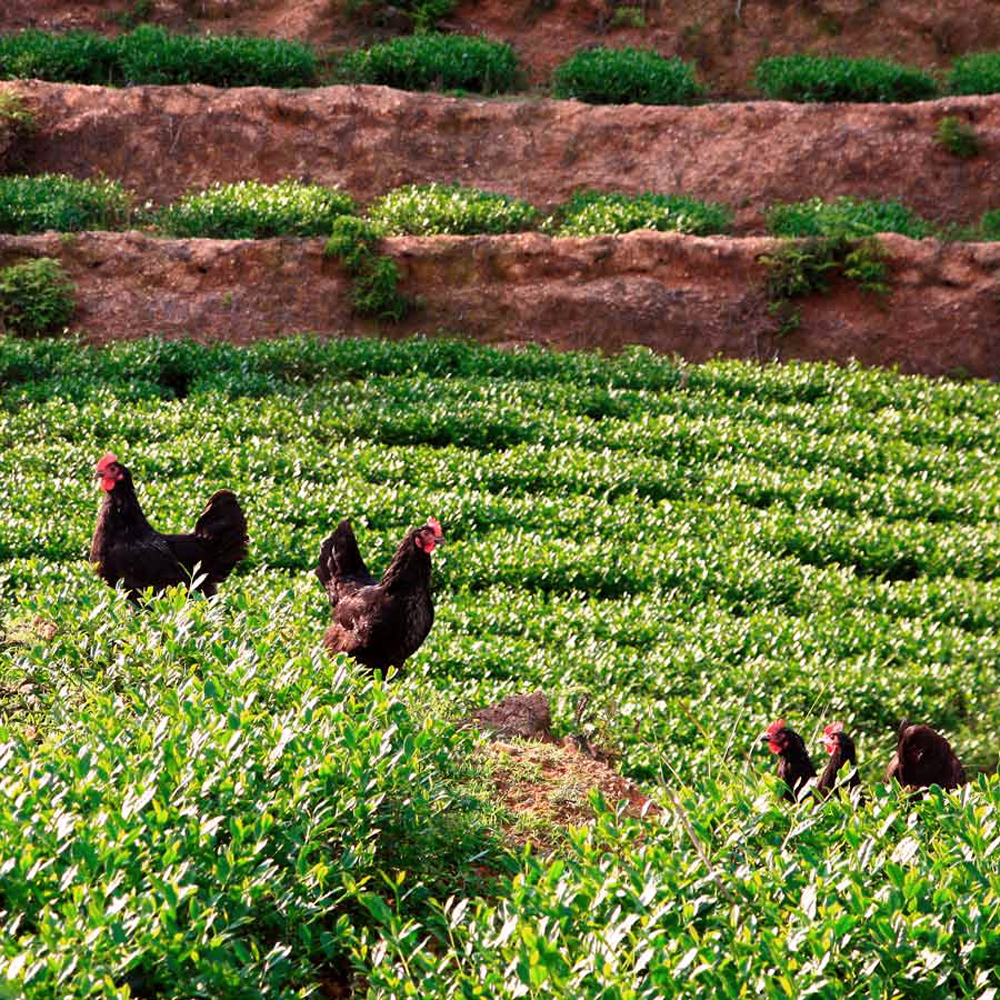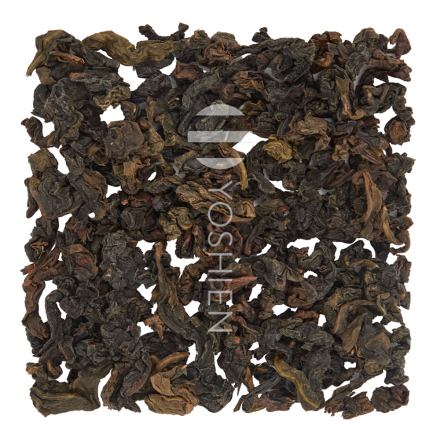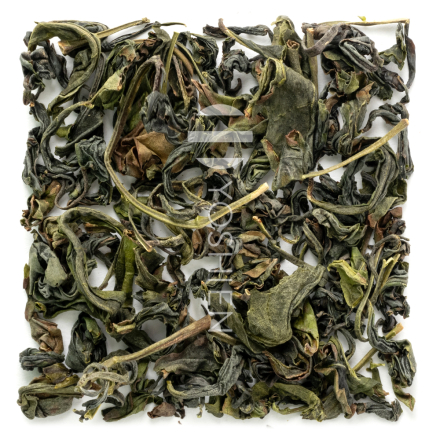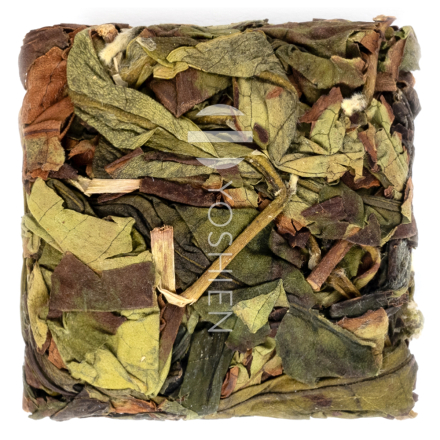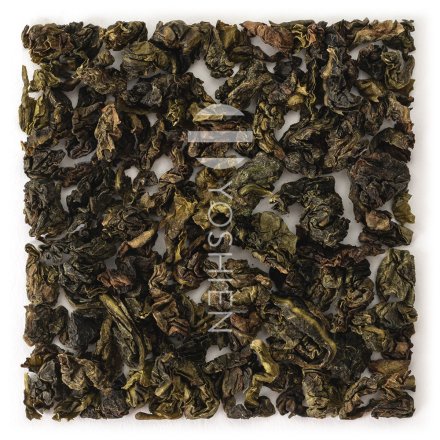Special features in location, cultivation and processing
This Tie Guan Yin comes from the original growing region of this renowned Oolong, which is Anxi. Nowadays, this is no longer a given, as numerous imitations from surrounding areas exist and some Oolongs from Taiwan, produced using similar methods, sometimes share the same name.
There are several myths surrounding the origins of Tie Guan Yin cultivation. The tea is named after the Goddess of Mercy. According to a widely told legend, the goddess appeared in a dream to a poor farmer and guided him to a Tie Guan Yin tea tree, which he then used to establish a tea farm.
Authentic Tie Guan Yin is distinguished by a wide spectrum of floral aromas that evolve with each infusion. This unique aromatic complexity is attributed to the specific terroir and climate of Anxi’s rolling hills. The high-altitude terrain ensures regular drainage, while the proximity to the sea and the subtropical, humid climate of southern Fujian create ideal growing conditions. However, the key to this tea’s distinctive profile lies in the region’s rich, red soils. Slightly acidic and nutrient-dense, these soils provide an optimal foundation for the tea plants to thrive.
The Evolution of Tie Guan Yin
The story of this tea began during the Qing Dynasty when Oolong-processing techniques from Wuyi were introduced to Anxi. The region’s native tea cultivars (which later took on the same name as the tea itself, Tie Guan Yin) proved to be especially well-suited to this method of production. Unlike the Wuyi Oolongs, which undergo heavy roasting, Anxi’s tea masters developed a gentler roasting approach, unveiling an entirely new flavour profile. These early, lightly roasted and caramel-sweet Tie Guan Yin varieties are now referred to as traditional Tie Guan Yin.
By the late 1990s, new Oolong-processing techniques from Taiwan began influencing Tie Guan Yin production, with final roasting largely omitted. This approach highlights the tea’s natural floral notes – a flavour profile that gained widespread popularity and continues to dominate the market today.
Today, Tie Guan Yin teas are generally classified into three primary processing styles:
Qing Xiang (清香) – Minimal to no roasting, with a fresh, green, and slightly vegetal character.
Hua Xiang (花香) – Exceptionally floral and fresh, with very light roasting.
Nong Xiang (濃香) – A more intensely roasted Tie Guan Yin with a rich, full-bodied, and slightly sweet profile.
The best harvest time for Tie Guan Yin is typically in May, during the spring season. However, this does not apply to Nong Xiang Tie Guan Yin, as its robust roasted aroma benefits from the stronger flavour profile of autumn-harvested leaves.
The Traditional Harvesting & Processing Method
Our Anxi teas are traditionally hand-picked, following the Oolong standard of picking the bud and the first three leaves. For Oolong, the leaves are allowed to grow slightly larger than those harvested for green tea.
After picking, the leaves are first withered in the sun to reduce moisture content and initiate light oxidation. They are then brought indoors for further withering. At this stage, they are repeatedly shaken in large drums to enhance oxidation. This produces tiny tears along the leaf edges, allowing cell sap to release and react with oxygen. This process – agitating the leaves followed by a resting phase – is repeated three to four times until the right degree of wilting is achieved. The tea master stays vigilant throughout the night, monitoring the oxidation process every hour with little sleep. As oxidation progresses, the edges of the leaves take on a reddish-brown hue. At just the right moment, determined by the tea master, the oxidation is halted in an oven using heat ("Kill Green").
Next, the leaves are broken up in a rolling machine, distributing the cell sap evenly across the surface, where it hardens. The tea is then shaped into its characteristic semi-spherical form through a combination of manual and machine-assisted rolling ("Ball Cloth Rolling", Baorou 包揉). Finally, the tea is dried in an oven and may undergo additional roasting, depending on the style.



